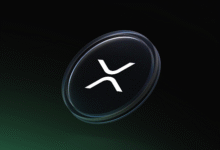How Regulation Might Shape XRP Price Role in the Global Payment System

Crypto has always had a complicated relationship with regulation. For years, digital assets grew in a kind of half-light — not fully regulated, not entirely ignored either. But as the space matures, regulation isn’t just coming — it’s here. And for XRP price, one of the most established names in the market, regulation isn’t simply a backdrop. It’s likely to be a defining force in how the asset evolves.
Unlike many tokens built around hype or short-term speculation, XRP was designed with a very specific mission: to make global payments faster, cheaper, and more efficient. And that mission puts it right at the intersection of finance and policy.
How governments and regulators decide to treat assets like XRP could determine not just its future, but the shape of the global payment system itself.
Why Regulation Matters in the First Place
For all the excitement around blockchain, global payments remain one of the most heavily regulated areas in finance. Money doesn’t move across borders without rules — not when it touches banks, payment processors, and clearing systems that operate under layers of legal oversight.
That means any technology trying to modernize how payments work can’t just move fast and break things. It has to fit into a regulated world. Or at least, learn to work alongside it.
That’s where XRP stands apart. It’s not just another asset competing for attention. It’s built to act as a bridge — connecting banks, currencies, and payment systems. But that also means it can’t exist entirely outside regulatory frameworks. It has to play in the same arena as the traditional system it’s trying to improve.
A Quick Look at XRP’s Original Vision
When XRP was created in 2012, it wasn’t pitched as a way to overthrow banks. It was pitched as a way to help them move money better.
Cross-border transactions can be painfully slow. A wire transfer from one country to another can take days. Fees pile up at each step, and the system depends on a chain of intermediaries that most people never see. XRP’s core idea is simple: act as a neutral bridge asset, allowing value to move from one currency to another in seconds.
This is a very different story from Bitcoin’s early “anti-bank” ethos. And it’s one of the reasons XRP has always attracted attention not just from retail investors, but from banks, remittance companies, and payment networks.
But here’s the thing: when you aim to be part of the plumbing of the global financial system, regulation stops being optional.
The SEC Case: A Catalyst for Clarity
The 2020 lawsuit between the U.S. Securities and Exchange Commission (SEC) and Ripple Labs changed how people talk about crypto regulation. Suddenly, the industry wasn’t just watching from the sidelines. It was learning in real time what happens when regulators take action.
The heart of that case was a simple but critical question: is XRP a security or something else? When the judge ruled in 2023 that XRP is not a security when sold on public exchanges, the decision didn’t just affect one company — it set a tone for how digital assets might be classified going forward.
For XRP, the ruling gave some breathing room. But more importantly, it highlighted something bigger: if regulatory clarity improves, institutional adoption becomes far more realistic.
Financial institutions won’t build on something they don’t fully understand legally. Clarity isn’t just a legal win. It’s a green light for growth.
Regulation as an Accelerator, Not Just a Barrier
It’s easy to view regulation as a threat to crypto. But for assets like XRP price USD, it can actually accelerate adoption.
Why? Because the institutions XRP wants to work with — banks, central banks, remittance firms — don’t operate in gray zones. They need legal certainty. They need to know what’s allowed, what’s not, and how compliance works.
When regulation sets clear rules, it gives these institutions the confidence to engage.
- Compliance officers can design frameworks.
- Risk teams can evaluate exposure.
- Executives can sign off on real pilots and integrations.
That’s the difference between being a speculative asset and becoming part of the real payment infrastructure.
The Global Landscape: Not Just a U.S. Story
While the SEC case made headlines in the U.S., XRP’s future will be shaped globally.
In Europe, the MiCA (Markets in Crypto-Assets) framework is laying down clear guidelines for how digital assets should operate. In Asia, countries like Japan have already recognized XRP as a digital asset, not a security. And in many parts of the world, central banks are exploring how blockchain technology can fit into existing payment systems without replacing national currencies.
This global patchwork of regulation is slowly moving toward something that looks more structured. If XRP can navigate that landscape — and it already has a head start compared to many newer tokens — its role in cross-border payments could expand dramatically.
Interoperability and Trust
One of the biggest challenges in modern payments is interoperability. Banks, networks, and fintechs speak different “languages.” Moving money between them requires trust, compliance, and reliable rails.
XRP’s technology was built with this problem in mind. But trust doesn’t just come from tech. It comes from legal and regulatory frameworks that allow institutions to rely on it without fear of sudden bans, penalties, or classification changes.
When regulators give that trust a structure, the bridge becomes stronger.
That’s why XRP’s future isn’t just about code. It’s about policy alignment, too.
XRP’s Unique Position Among Digital Assets
Not every digital asset is positioned to thrive in a regulated environment. Meme coins and many speculative tokens would struggle if forced to meet compliance standards. But XRP is different. Its entire design is built to integrate, not disrupt.
This gives it a kind of quiet advantage. While other tokens might lose steam in a stricter regulatory environment, XRP could actually benefit. In fact, if regulations tighten globally, assets like XRP — with clear utility, institutional ties, and growing legal clarity — may emerge stronger than before.
It’s not about being the loudest. It’s about being the most compatible.
How Regulation Could Shape XRP’s Role
If regulatory clarity continues to grow, here’s what might happen to XRP’s position in global payments:
- Faster Integration with Banks and Payment Networks
Clear rules make it easier for institutions to adopt new rails. XRP could become part of the settlement layer for international transfers. - Increased Use in CBDC Interoperability
Central Bank Digital Currencies (CBDCs) are coming. But they won’t all talk to each other easily. XRP could act as a bridge between different national systems. - Lower Volatility for Institutional Use
As regulated adoption grows, XRP’s use for real payments may reduce speculation-driven volatility, making it more stable and predictable. - Global Regulatory Recognition
If more countries align on definitions, XRP could see faster approval and wider adoption in cross-border payment corridors.
Regulation Won’t Be Perfect — But It’s Necessary
It’s worth being honest here. Regulation won’t roll out smoothly. Different jurisdictions will move at different speeds. Some will overregulate. Others will underregulate. There will be legal battles, delays, and compromises.
But for XRP, even imperfect clarity is better than the regulatory gray zone it’s lived in for years. Payment systems depend on predictability. And regulation, for all its flaws, provides that.
Final Thought: Clarity Is Power
XRP isn’t just another token riding waves of hype. It was designed to solve a real, expensive problem in global finance — moving money across borders more efficiently.
For it to fully realize that vision, regulation isn’t the enemy. It’s a critical piece of the puzzle. When rules become clearer, adoption gets easier, trust gets stronger, and innovation moves from the edges into the core of the global system.
XRP’s story has always been tied to finance. Its future, more than ever, will be tied to policy.




